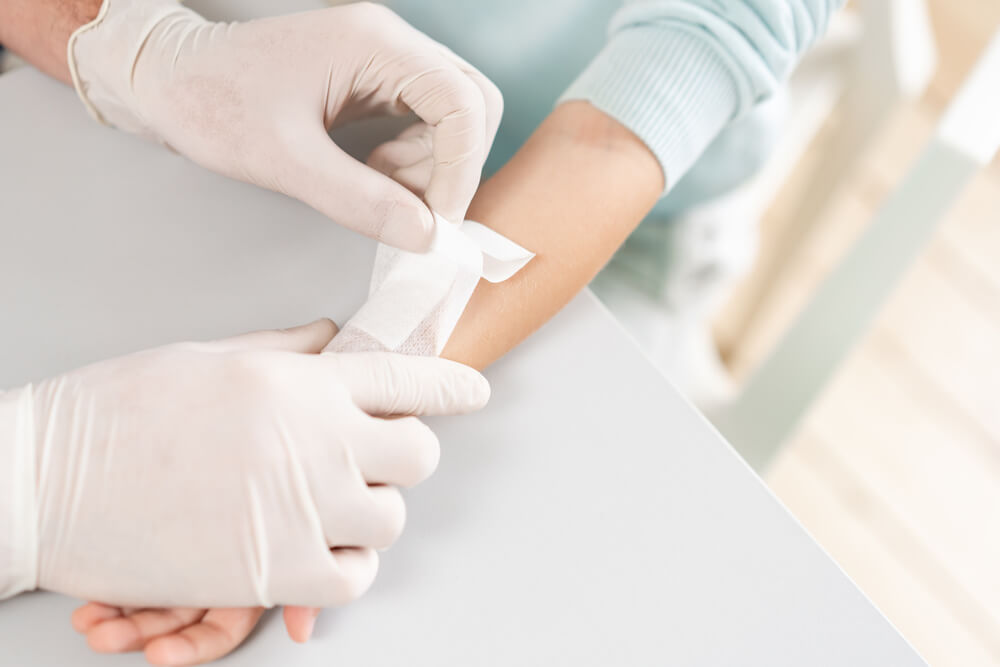4 Types Of Open Wounds And How To Treat Them

An open wound is an injury involving a break in the skin. Accidental cuts or scrapes often cause them, but they can also result from surgery and other medical procedures.
Open wounds are dangerous not only for patients but also pose serious health risks to first responders treating them. In particular, they’re at risk for contracting infections when working around an open injury. These infections can cause skin lesions and other complications that require antibiotic treatment.
One way to prevent these infections is by wearing gloves that cover all exposed skin when handling an open wound. In addition, you can treat open injuries with a wide range of products.
These medical products include antiseptics, bandages, and dressings. These products help to prevent bacterial infection and promote healing by keeping the wound clean and protected.
Read on for further info about various types of open wounds and how to treat them.
- Abrasion
Abrasion is an injury that occurs when your skin scrapes against a rough surface. This skin injury usually occurs on bony areas like elbows, knees, and ankles. Examples of abrasions include road rash and a scraped knee.
Abrasions are commonly associated with falls and sports-related injuries. If you get an abrasion, it’s essential to treat it quickly. That way, it’s less likely for the wound to become infected.
To treat an abrasion, gently wash the area with water and mild soap. Use sterilized tweezers to remove particles from the wound. If there’s bleeding, apply gentle pressure using a clean cloth. Apply a thin layer of antibiotic ointment, then cover with a gauze or bandage. Clean the wound, apply some ointment, and change the dressing every day.
If there’s no bleeding, apply antibiotic ointment but leave the wound uncovered.
- Laceration
A laceration refers to the tearing of the skin, flesh, tendon, or other tissue. The most common causes of laceration are a knife, sharp object, or a fall. This open wound can result in significant blood loss, which may be life-threatening if not promptly treated.
Lacerations may be shallow or deep and short or long. Shallow lacerations may not leave noticeable marks. Meanwhile, deep lacerations may leave bruises or cause bleeding for some time after the incident.
To treat a laceration, the first thing to do is stop the bleeding. Apply pressure to the wound with a clean cloth or bandage. Next, clean out any dirt or debris embedded in the wound. This will help prevent infection and promote healing. Then, apply antibiotic cream or spray directly to the wound.
If the wound is more than ¼ inch deep, continues to bleed, and has jagged edges, seek medical attention immediately to receive proper care and treatment for your injuries.
- Avulsion
An avulsion wound is a type of wound that occurs when the skin is torn from its natural attachment point. It can happen on any body part, but it’s most common on the hands and feet. An injury can cause these wounds to the skin or muscles.
The treatment for an avulsion wound depends on the severity of the injury. You should apply ice packs to the wound if there’s no damage to underlying tissue, such as muscles or tendons. But first, cleanse the area of any dirt or debris that could cause an infection.
Once the area has been adequately cleaned and debrided, elevate the wounded body part above the level of your heart, then apply pressure with a bandage or cloth wrapped around the area.
However, if you have a deep avulsion wound, you should go to the emergency room immediately so that a medical practitioner can evaluate your condition and treat you accordingly.
- Puncture
A puncture wound is a hole in your skin or tissue caused by a pointed object, such as a nail, penetrating the skin.
Puncture wounds can be painful and may affect deeper tissue layers. You should clean a minor puncture wound with warm water and soap as soon as possible. Apply an antibiotic ointment and cover it with a clean bandage.
If the puncture wound is deep or large, due to an animal bite, or caused by a rusty object, seek medical attention right away.
Conclusion
Every open wound is unique, and the best treatment will depend on the nature of the wound, its location, and its severity. It’s important to apply first aid to minimize the risk of infection. Minor open wounds may be treated at home. However, you should see a doctor if the wound is deep and the bleeding doesn’t stop even after applying direct pressure. Getting proper medical treatment can help prevent infections and other complications.
Note:– Article is for general information only. Please consult your personal medical expert before following any guide or link mentioned in this article.
